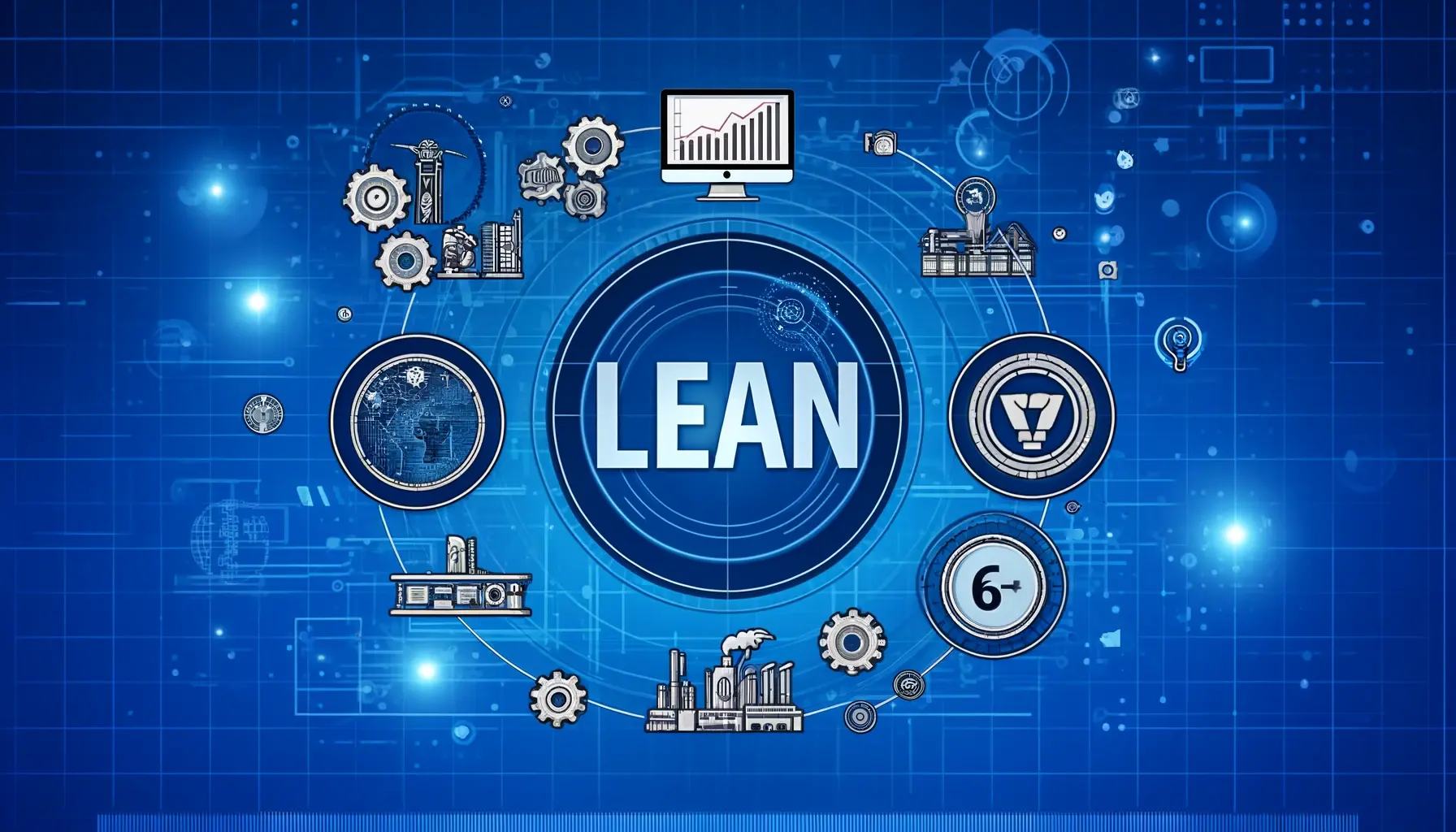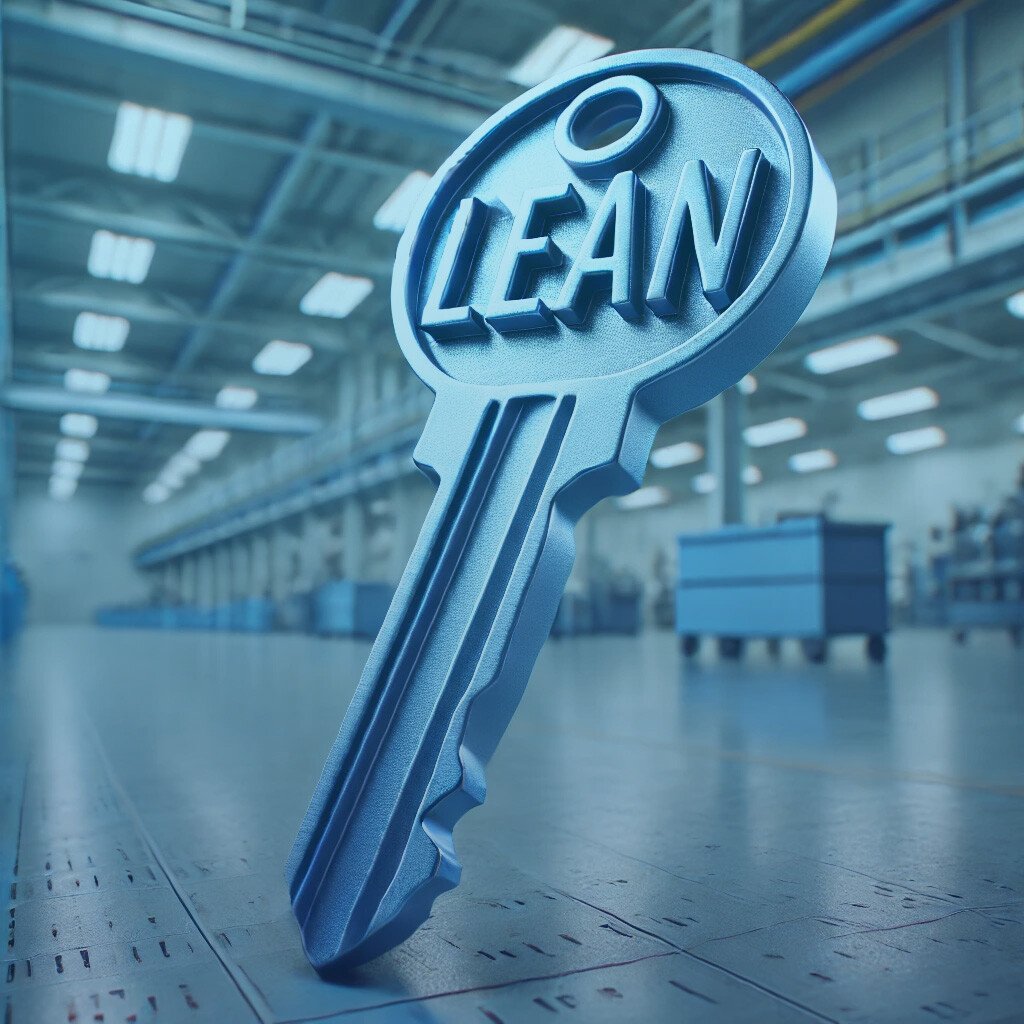How Multi-Zone Sourcing Can Save Your Supply Chain – And Your Sanity
Let’s face it, the past few years have been a crash course in supply chain fragility. If you’re a CEO or senior manager in manufacturing, you've...
All tasks in Shop Floor Management -
digitally supported with the functions of ValueStreamer®.
ValueStreamer® as a leadership tool supports the continuous improvement of processes and the optimization of collaboration.
Optimize processes in all areas of your business with digital Shop Floor Management. Learn more about the use cases.
6 min read
 Dr. Andreas Romberg
:
Jun 12, 2024 3:30:00 PM
Dr. Andreas Romberg
:
Jun 12, 2024 3:30:00 PM

Lean management is a management framework that aims to continuously improve efficiency and productivity in all functions and processes of a company.
It is one of the most important approaches in the pursuit of Operational Excellence (OPEX).
The focus of lean management is on customer orientation and cost reduction. This is to be achieved by reducing waste throughout the company.
Waste is defined as the non-value-adding parts of work that do not add any (added) value to the product or service and for which the customer is not prepared to pay.
The term “lean” originally comes from the Toyota Production System (TPS), which was developed in the 1950s after the Second World War as a result of the prevailing general shortage of resources in Japan. The lean philosophy was initially only applied in production and logistics management.
Since then, the ideas behind lean management have been successively extended to many different business areas and industries. The corporate philosophy is now applied in a wide range of industries such as automotive, services, healthcare and aerospace, as well as in virtually all areas of the company.
Lean management aims to make the entire value chain more efficient through the holistic application of various principles, lean methods and procedures.
This enables:
Lean management offers a wide range of benefits for companies, regardless of their industry, size, geographical and cultural framework.
Overall, lean management helps to strengthen the competitiveness of companies by making them more flexible, agile, efficient and customer-oriented.
The main benefits of lean management are summarized below:

Figure 1: The seven core benefits of Lean Management Source: Staufen.ValueStreamer GmbH
Increasing efficiency:
By identifying and eliminating waste, companies can optimize their processes and make them more efficient. This leads to shorter throughput times, lower stock levels and improved use of resources.
Quality improvement:
Management promotes a constant focus on adding value and avoiding waste. This helps to increase the quality of products or services and minimize defects.
Cost reduction:
By reducing waste, overproduction and inventory, companies can lower their costs. This leads to better financial performance and competitiveness.
Customer orientation:
Lean management places a strong focus on the needs and wishes of customers. By aligning their processes with value creation for the customer, companies can increase customer satisfaction and achieve competitive advantages.
Flexibility and adaptability
The pursuit of freedom from disruption, the creation of flow and the synchronization of work systems and the implementation of the pull principle (see Figure 2) enable companies to react more flexibly to fluctuations in demand. This improves adaptability and enables a faster response to changes in the market.
Employee engagement:
Lean management emphasizes employee involvement in improvement processes. This helps to increase employee engagement, develop their skills and promote a culture of continuous improvement.
Short time to market:
The efficiency gains and reduction in waste allow companies to bring products or services to market faster, which is particularly beneficial in fast-moving industries.
Increased, improved innovation capability:
Eliminating waste and inefficient processes can free up resources that can be used for innovative projects and product development.
The central principles of lean management include the four criteria of a lean work system (see Figure 2) and can be summarized as described below.
1. Freedom from disruption:
In the context of avoiding waste, lean management also permanently strives to avoid/reduce disruptions.

Figure 2: The four lean criteria of a lean working system; Source: Staufen.ValueStreamer GmbH
2. Creation of flow:
Optimization of workflows and processes to enable a continuous flow of value creation, without interruptions, waiting times or bottlenecks.
3. Rhythm/timing:
As a rule, production processes are subject to clocking that is based on the customer cycle in order to enable a continuous flow of value creation in harmony with the customer.
In office processes, too, it makes a lot of sense to subject the work systems, such as product development or order processing in special machine construction, to a cycle in order to subject the process/project results to a regular target/actual comparison in a weekly cycle, for example. This enables prompt deviation management. In this context, the central management method of lean management - store floor management - is also used extensively.
4. Pull principle:
Optimization of workflows and processes to enable a continuous flow of value creation, without interruptions, waiting times or bottlenecks.
Perfection through the principle of continuous improvement (Jap. KAIZEN).
The idea of continuous improvement is a central concept in lean management. Employees are encouraged to continuously look for ways to improve their work and processes.
5. Value creation always takes place from the customer's perspective
Focus on creating value from the customer's perspective. Anything that does not contribute to value creation and for which the customer is therefore not willing to pay is considered waste and should be minimized or eliminated.
6. Identification and reduction of waste (Japanese: MUDA)
Waste refers to any activity, resource or process that does not create direct value for the customer. This includes overproduction, inventory, excessive transportation, waiting times, unnecessary movements, over-processing and defects.
7. Respect for people
Recognizing the importance and potential of employees; lean management emphasizes collaboration, leadership, training and involvement of employees in the improvement process.
There are various methods and tools in lean management that serve to reduce waste, optimize processes and promote continuous improvement. The methods can be applied individually or in combination, depending on the specific needs and challenges of an organization.
The key is to continuously apply and adapt these methods in order to achieve sustainable improvement.
The most important methods are listed below.
| Method | Description |
|
5S Method |
|
|
Kanban |
A system for controlling and optimizing production processes through visual control of workflows. Kanban uses cards or digital systems to visualize progress and resource requirements. |
|
Kaizen |
Continuous improvement through small, incremental steps. Employees are encouraged to make regular suggestions for process optimization in order to increase efficiency. |
|
Value Stream |
|
|
Pull system |
Production based on actual customer demand. Products or services are only created when they are needed in order to avoid overproduction. |
|
Just-in-Time (JIT) |
The provision of materials, products or services exactly when they are needed, without unnecessary stocks. |
|
Poka-Yoke |
The implementation of error prevention techniques to minimize human error in processes. This can be achieved through improved process designs or the use of devices. |
|
Andon |
A visual control system used to display the status of machines or processes. It enables employees to quickly identify and react to problems. |
|
SMED |
A method of reducing set-up times for machines and equipment to increase flexibility and production capacity. Also makes an immense contribution to reducing stock levels and enables pull control based on very small batches. |
|
Hoshin Kanri (Policy Deployment) |
A method of strategic planning and implementation that ensures that all levels of a company are aligned towards the same goals. |
The following are some examples of how lean management is applied in practice in various industries and business areas:
Production and manufacturing (lean production):
Application of Kanban: implementation of Kanban systems to control the flow of materials, reduce inventories and optimize the production process according to the pull principle.
Value stream mapping: Identification of bottlenecks and waste in the production chain in order to improve processes and shorten throughput times.
5S method: organization and standardization of workplaces to increase efficiency and optimize the working environment
Service sector:
Process optimization in customer service: application of lean methods to shorten processing times for customer inquiries and increase customer satisfaction.
Value stream mapping in the healthcare sector: Identifying bottlenecks in patient care and reducing waiting times in hospitals.
Kanban in finance: Using Kanban to manage the payment process and minimize bottlenecks in the finance department.
Logistics and supply chain management (lean supply chain):
Just-in-time (JIT) in warehousing: minimizing stock levels and providing materials or products when they are needed.
Value stream mapping in the supply chain: Optimizing the supply chain by identifying bottlenecks and waste.
Information technology and software development:
Agile methods: Integration of agile principles, such as Scrum, to enable iterative and flexible software development.
Kanban boards for task management: Visualization of work orders and progress through Kanban boards to improve workflow.
Healthcare (Lean Healthcare):
Poka-Yoke in patient care: applying error prevention techniques to improve the quality of patient care.
Kaizen workshops: Introduction of regular improvement workshops to actively involve employees in the process of continuous improvement.
Office and administrative processes (lean administration):
Application of 5S in the office: organization and structuring of office environments to increase the efficiency of administrative processes.
Small businesses and start-ups (Lean Startup):
Lean Startup Methods: Application of lean principles to iteratively develop products or services and respond quickly to customer feedback.
One-piece flow: Implementation of one-piece flow principles to maximize the efficiency of production or service processes.
These examples show that lean management is versatile and can be applied to different areas of a company. The key is to adapt the lean principles and methods to the specific requirements and circumstances of the respective area.
At the same time, lean management forms the basis for the introduction of other methods, such as agility/agile working, digitalization, etc. Without the organizing, standardizing and permanently improving aspects behind the lean management philosophy, further transformations and transitions are not possible.

Let’s face it, the past few years have been a crash course in supply chain fragility. If you’re a CEO or senior manager in manufacturing, you've...

What’s Going Wrong, and What You Can Do About It If you manage a mid-level manufacturing company, you know the pressure of meeting yearly goals. But...

When we think of Halloween, images of haunted houses, spooky masks and eerie fog may come to mind. But what if we told you that these elements are...

The 10 Main challenges The introduction of lean management can encounter a variety of challenges, both cultural and operational.

Lean Management - a prerequisite for digital transformation Lean management forms the basis for the introduction of other methods, such as...

Is lean management still up to date? We've been hearing more and more lately: Lean is over! We have been in the age of beyond lean for a long time!